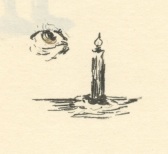Nothing makes you feel quite as vulnerable as standing opposite a stranger, looking deep into her eyes and breathing, mouth open. Especially for a protracted period of time. You smile, she smiles. Your eyes skid around her forehead, nose, and mouth, while her eyes appear to be fixed on one point on your face. After a moment, awkwardness creeps in and your blinks start to feel artificial, like punctuation marks on your gaze.
This is one of many exercises to “free up the voice” that I experienced in my friend’s vocal training class, which I’d signed up for to prepare for an upcoming presentation. The activity required everyone in the class to criss-cross the room randomly and, at certain points, turn to the person closest to us and lock eyes. Then we were to breathe and make a guttural noise to express a certain emotion. In this way, we could discern how intention shapes the voice, either augmenting or stifling its robustness.
I looked at the young woman in front of me, her pupils gaping black holes in pale aqua disks. It was all my eyes could do to stay fixed on hers and not gallop around her face like a wild horse in a paddock. Our teacher instructed us, “Think about something you want this person to know about you—and now make a sound.” I wanted her to know I was a visual artist and a writer, and let forth a semi-confident “huh.” Her turn to say something about herself. “Huhhh,” she breathed. This interaction was not very informative, but I could discern her spirit and intention in her response.

Then we switched. The dark young man opposite me had incisive, concentrated eyes. As I looked into them, I felt more at ease and thought, “You and I have had similar experiences as minorities.” He was also a writer; I read him, he silently read me. When it was time to change, we nodded at each other, an unspoken empathy between us.
The next woman was young with inquisitive, tawny eyes, and her smile echoed mine. We looked, blinked, and breathed with implicit understanding and respect. It’s amazing how two individuals can instinctively mirror each other, even in the most basic gestures.
The next exercise was harder. We were instructed to look at the person, think of something you don’t want them to know about you, and then release your voice. I stopped opposite a professional radio announcer, and instead of considering my deepest, darkest secrets, I thought of my scarred, unshaven legs under my stockings. A strangled-sounding “hrgh” emerged from my throat. The man gave a barely perceptible nod and made a furtive noise. It sounded like a dying candle in an empty room and made me sad. We each tried again. Not much better.
So it went on. An older woman with gray-green eyes that reminded me of a hushed garden on an early spring morning. A jubilant Hispanic woman with opera training whose eyes became happy semicircles as her cheeks pushed upwards. The exercise challenged you to be 100% present, to observe and intuit and listen.

The most insightful exercise was to recite a line of text you liked, and then repeat the word that was easiest to identify with and the word that was hardest to own. For many people, the most difficult word to say and fully inhabit was “mine.” Their mouths pronounced the word, but their eyes told far darker, sadder stories. I struggled to vocalize “anger” because of my complicated, arduous relationship to it. The easiest word for me: “tell.”
The line I had chosen was from Shakespeare’s The Taming of the Shrew: “My tongue will tell the anger of my heart.” I had felt somewhat guilty reciting it to my partner, the imperturbable, garden-eyed woman, who demurely responded, “I think that I shall never see/A poem lovely as a tree.”
By the end, I was getting to like this exercise. We do it all the time: embracing strangers with our gaze, inviting them in and listening, and reading the worlds written in their eyes. In each person there is beauty, pain, and wonder along with a shocking, if fleeting, familiarity. To my surprise, even though this class was intended to empower the voice, it was the eyes that stayed with me long afterwards.










